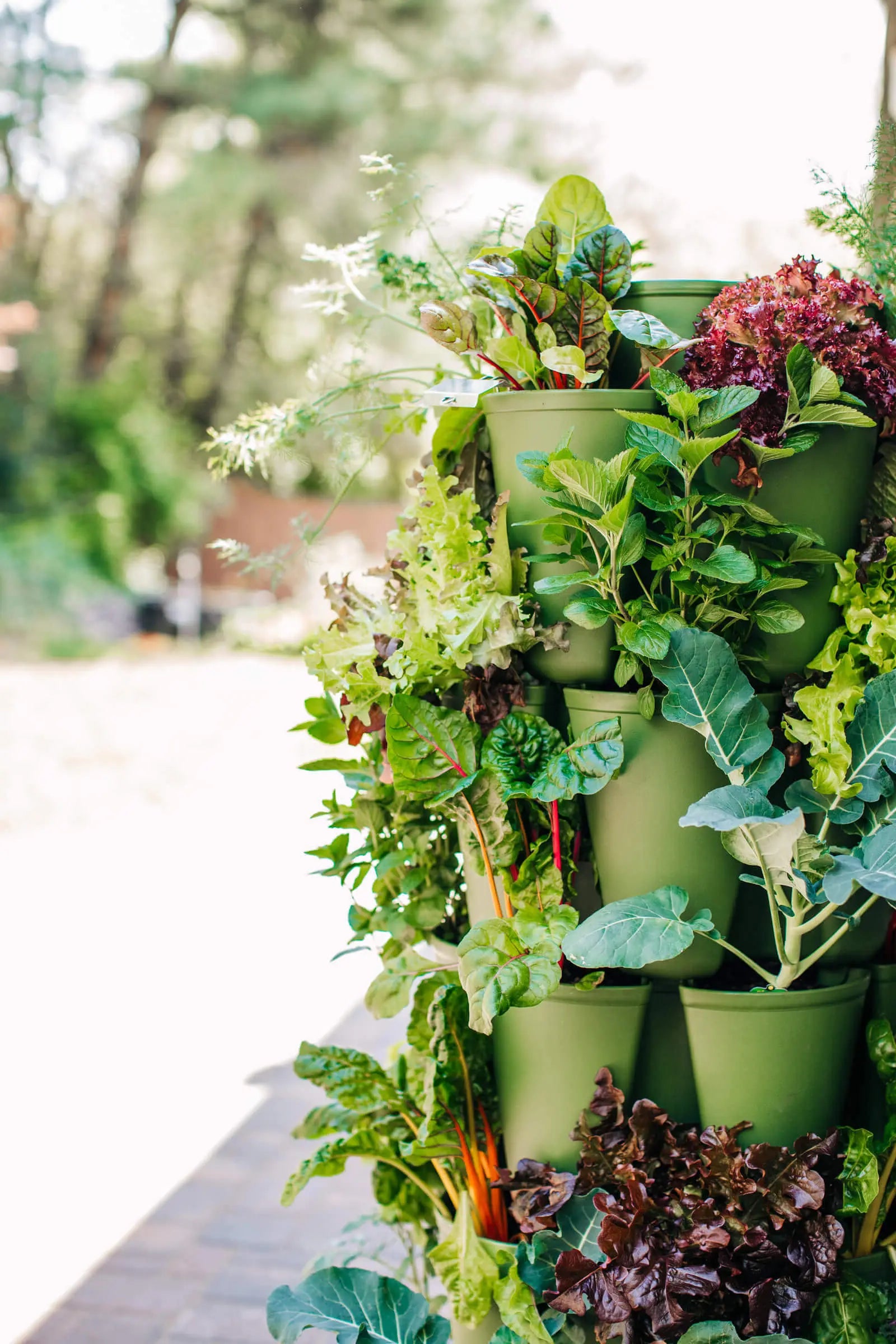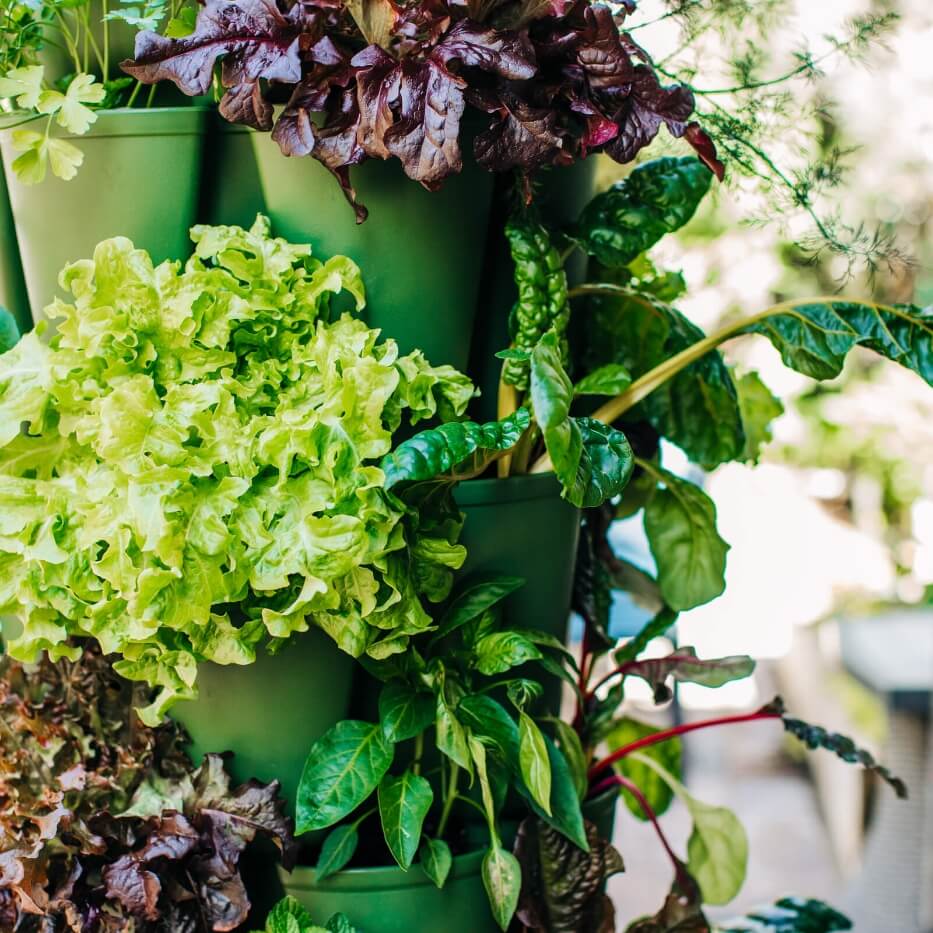Whether planning what plants to grow in your GreenStalk, raised beds, or in-ground gardens, it is essential to know what zone you are in. You may have heard of these zones being referred to as plant hardiness zones, planting zones, or growing zones. In this blog post we will be going over what a growing zone is, how many zones there are in the United States, and delving into what states are in which zones. *Spoiler alert* every state is in more than one growing zone!
What is a Growing Zone?
Growing zones are locations across the United States and Puerto Rico that are used to help gardeners and/or farmers know what plants or crops will be able to survive in their locations. A common misconception about growing zones is that they are based on the lowest temperature that has occurred for that area or that it is based on the lowest temperature that is believed will occur in the future. However, growing zones are decided based on the average annual minimum temperature taken over a span of years.
It is important to remember that, while knowing what growing zone you are in can be a big help to your gardening, the personal knowledge and experience that your local garden center workers, yourself, or other local gardeners cannot be replaced by this map. We also have a support team at GreenStalk Garden available to our GreenStalk gardeners on the phone or by email.
How Many Growing Zones are in the US?
As of 2012, there are 13 growing zones that cover the United States and Puerto Rico, and each zone has two sub-zones that are known as “A” and “B.” The temperatures in these zones range from -60 degrees Fahrenheit to 70 degrees Fahrenheit, and each zone has a 10-degree difference from the next zone.
Circumstances That may Affect Your Growing Area
Keep in mind that the USDA Plant Hardiness Zone Map is just a guide, as is any growing zone map that you may come across. Even though the zone you are in may state certain temperatures for your area, that does not mean that it will be 100% accurate. There are several reasons that can cause the temperature to fluctuate in your area, such as, but not limited to, blacktop roads, concrete, wooden decks, small hills, and valleys.
Always remember, if you are having any issues or questions, you can try to find your answers on the internet, at your local garden center, call your local horticultural extension office, or reach out to us at GreenStalk Vertical Gardens. We are happy to help!
| State | Zones | State | Zones |
| Alabama | 7-9 | Nebraska | 4-5 |
| Alaska | 1-7 | Nevada | 5-9 |
| Arizona | 4-11 | New Hampshire | 3-6 |
| Arkansas | 6-8 | New Jersey | 6-7 |
| California | 5-11 | New Mexico | 4-9 |
| Colorado | 3-7 | New York | 3-7 |
| Connecticut | 6-7 | North Carolina | 6-8 |
| Deleware | 6-7 | North Dakota | 2-6 |
| Florida | 8-11 | Ohio | 5-6 |
| Georgia | 6-9 | Oklahoma | 6-7 |
| Hawaii | 9-13 | Oregon | 4-9 |
| Idaho | 3-7 | Pennsylvania | 5-7 |
| Illinois | 5-7 | Rhode Island | 5-7 |
| Indiana | 5-6 | South Carolina | 7-9 |
| Iowa | 4-6 | South Dakota | 3-5 |
| Kansas | 5-6 | Tennessee | 5-8 |
| Kentucky | 6-7 | Texas | 6-9 |
| Louisiana | 8-9 | Utah | 4-9 |
| Maine | 3-6 | Vermont | 3-5 |
| Maryland | 5-8 | Virginia | 5-8 |
| Massachusetts | 5-7 | Washington | 4-9 |
| Michigan | 4-6 | West Virginia | 5-7 |
| Minnesota | 3-5 | Wisconsin | 3-5 |
| Mississippi | 7-9 | Wyoming | 3-6 |
| Missouri | 5-7 | Puerto Rico | 11-13 |
| Montana | 3-6 |










